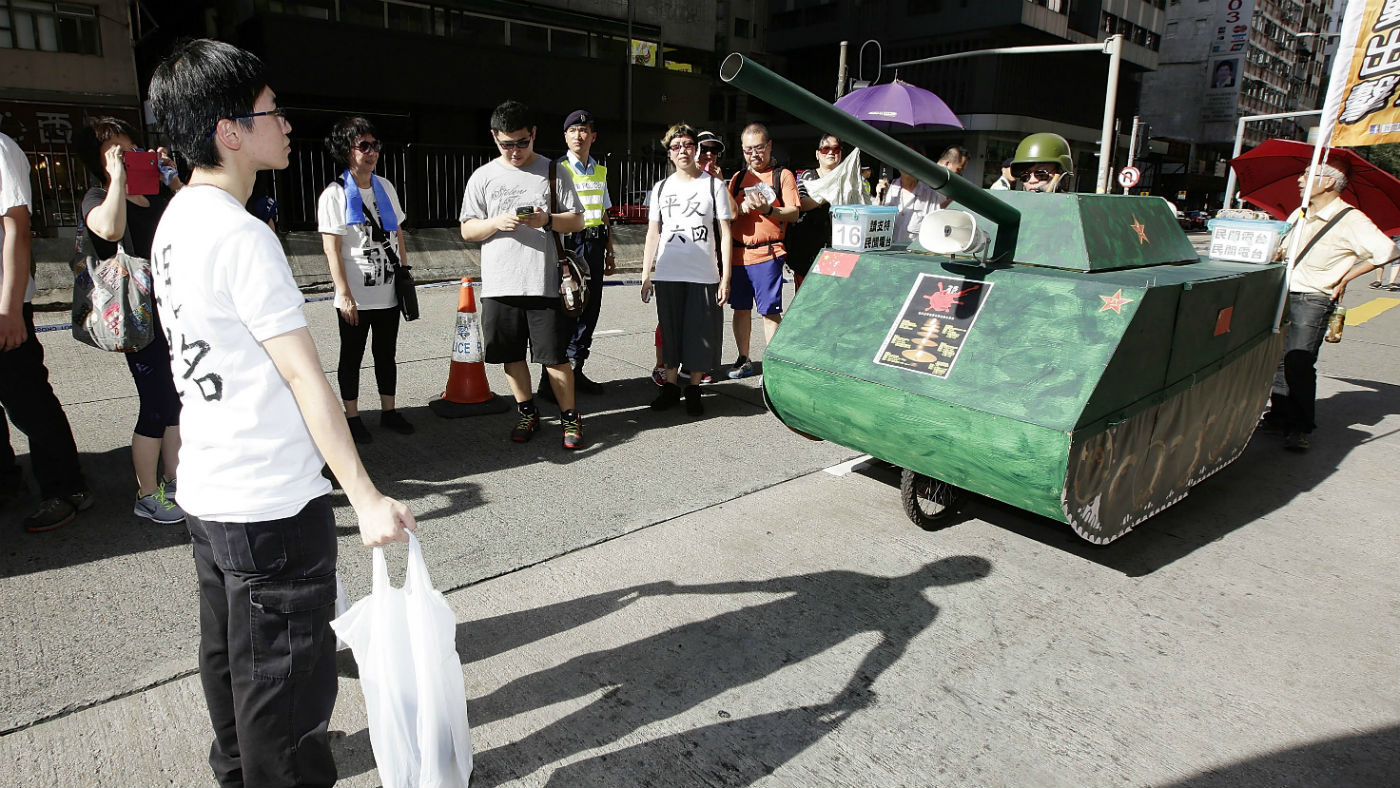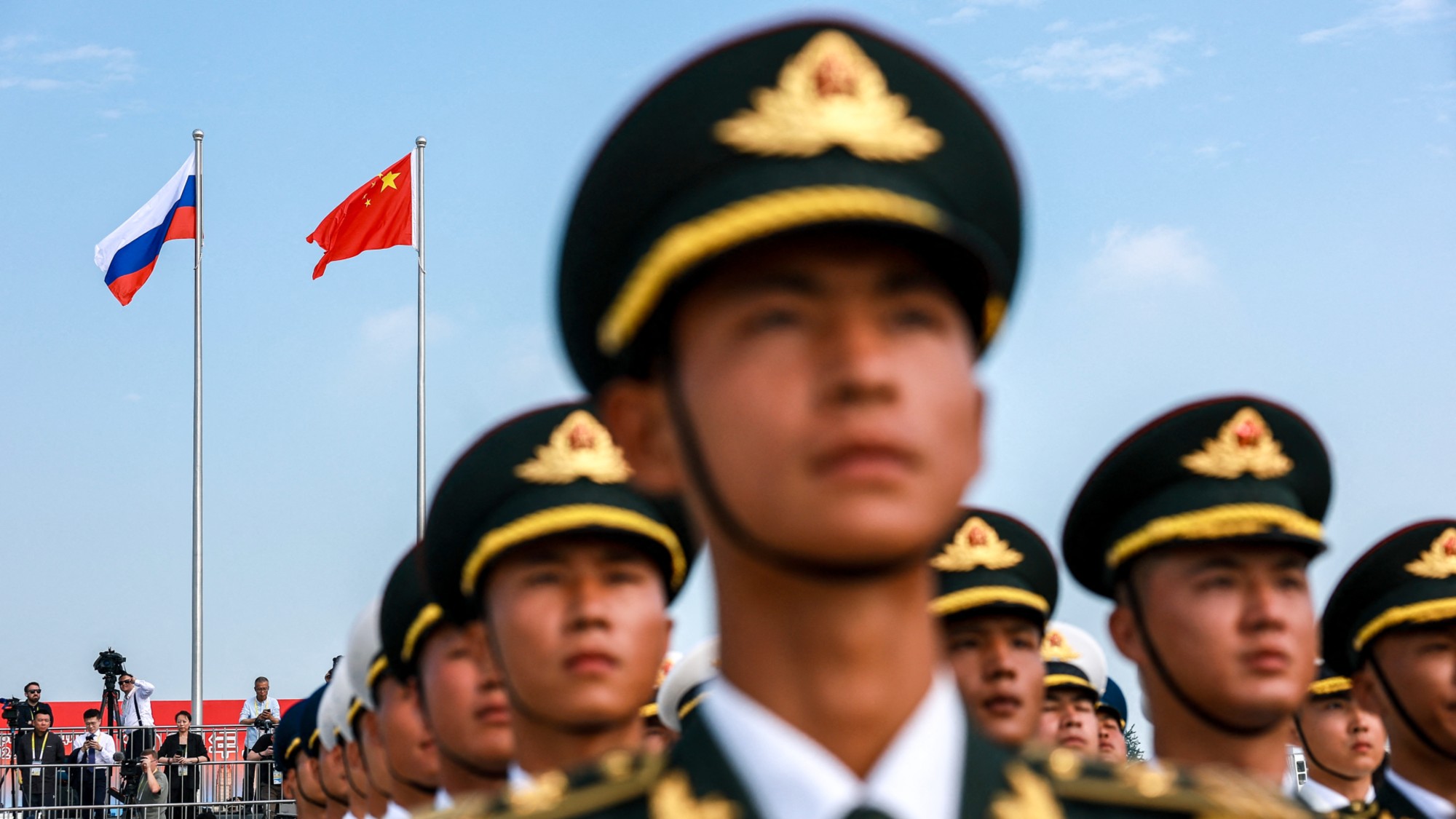Legacy of Tiananmen protests still haunts China 30 years on
Trade-off between economic prosperity and political freedoms now coming under strain

Thirty years on from the start of protests that would culminate in the Tiananmen Square massacre, the resulting trade-off between economic prosperity and political freedom is finally coming under strain.
While 4 June 1989 has gone down in history, in part thanks to the famous “tank man” photo, the origins of the protest date back earlier.
Thirty years ago on Monday, Beijing students gathered to mourn Hu Yaobang, a reformist official, kickstarting what CNN calls “the most important Chinese mass movement of the last half-century”.
The Week
Escape your echo chamber. Get the facts behind the news, plus analysis from multiple perspectives.

Sign up for The Week's Free Newsletters
From our morning news briefing to a weekly Good News Newsletter, get the best of The Week delivered directly to your inbox.
From our morning news briefing to a weekly Good News Newsletter, get the best of The Week delivered directly to your inbox.
Soon, massive crowds calling for change were converging on the central plazas of dozens of Chinese cities. On 20 May, the government imposed martial law in Beijing, and two weeks later, on 4 June, the movement ended after tanks were sent into Tiananmen Square and soldiers fired on unarmed civilians on the streets of the capital.
Estimates of the number of dead range from a few hundred to more than 2,000.
Remi Castets, an expert in Chinese affairs at Bordeaux University/Sciences Po told Euronews on the 25th anniversary of the massacre, the protesters’ demand could be divided into three main issues: the democratisation of the regime and the establishment of a multi-party system; a push to limit growing inequality; and a fight against corruption and nepotism in the party.
By brutally cracking down on protesters “the message from the Chinese Communist Party couldn’t have been clearer: Beijing would tolerate economic change, but not political change”, says Time magazine’s Michael Schuman.
A free daily email with the biggest news stories of the day – and the best features from TheWeek.com
The party has spent the intervening three decades trying to erase the protests from history, “and young people here have little knowledge or understanding of what happened that day” says the BBC.
All the while the attitude of China’s leadership has remained unchanged. While President Xi Jinping has moved to stamp out corruption and address inequality, he has also cracked down on political dissent, in the process assuming more personal power than any ruler since Mao Zedong.
Bonnie Girard in The Diplomat writes “the real and lasting legacy of Tiananmen Square is that, by not meaningfully confronting the Chinese government with palpable, long-term consequences for the murder of their unarmed citizens, extreme censorship and political repression have become institutionalised in China”.
“Today, those tools underpin the foundation of the state” she says.
Yet the trade-off between economic prosperity and political freedom which has sustained the relationship between the state and its citizens is now coming under strain.
As Castets says “as long as the Chinese government manages to maintain a growth rate above seven per cent, it can control social unrest. Because with a seven per cent growth rate, China remains able to integrate newcomers into the labour market”.
The problem is that growth has steadily fallen over the past decade, and now sits at around 6%, posing an existential threat to the regime.
Shuman says “if China is to lift itself into the ranks of the most advanced economies and rejuvenate its competitiveness, its people require the freedoms Tiananmen’s protesters fought for”.
“The Communist Party has to wake to the fact that Tiananmen’s legacy is holding the nation back” he concludes.
-
 Political cartoons for January 3
Political cartoons for January 3Cartoons Saturday's political cartoons include citizen journalists, self-reflective AI, and Donald Trump's transparency
-
 Into the Woods: a ‘hypnotic’ production
Into the Woods: a ‘hypnotic’ productionThe Week Recommends Jordan Fein’s revival of the much-loved Stephen Sondheim musical is ‘sharp, propulsive and often very funny’
-
 ‘Let 2026 be a year of reckoning’
‘Let 2026 be a year of reckoning’Instant Opinion Opinion, comment and editorials of the day
-
 How Bulgaria’s government fell amid mass protests
How Bulgaria’s government fell amid mass protestsThe Explainer The country’s prime minister resigned as part of the fallout
-
 Femicide: Italy’s newest crime
Femicide: Italy’s newest crimeThe Explainer Landmark law to criminalise murder of a woman as an ‘act of hatred’ or ‘subjugation’ but critics say Italy is still deeply patriarchal
-
 Brazil’s Bolsonaro behind bars after appeals run out
Brazil’s Bolsonaro behind bars after appeals run outSpeed Read He will serve 27 years in prison
-
 Americans traveling abroad face renewed criticism in the Trump era
Americans traveling abroad face renewed criticism in the Trump eraThe Explainer Some of Trump’s behavior has Americans being questioned
-
 Nigeria confused by Trump invasion threat
Nigeria confused by Trump invasion threatSpeed Read Trump has claimed the country is persecuting Christians
-
 Sanae Takaichi: Japan’s Iron Lady set to be the country’s first woman prime minister
Sanae Takaichi: Japan’s Iron Lady set to be the country’s first woman prime ministerIn the Spotlight Takaichi is a member of Japan’s conservative, nationalist Liberal Democratic Party
-
 Russia is ‘helping China’ prepare for an invasion of Taiwan
Russia is ‘helping China’ prepare for an invasion of TaiwanIn the Spotlight Russia is reportedly allowing China access to military training
-
 Interpol arrests hundreds in Africa-wide sextortion crackdown
Interpol arrests hundreds in Africa-wide sextortion crackdownIN THE SPOTLIGHT A series of stings disrupts major cybercrime operations as law enforcement estimates millions in losses from schemes designed to prey on lonely users